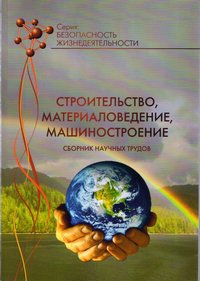The choice of materials for the development of protective coatings from hight temperatures
DOI:
https://doi.org/10.30838/P.CMM.2415.250918.50.130Keywords:
fire, extinguishing flame retardants, fire protection of wood, smoke formation, toxicityAbstract
Purpose. When developing protective coatings to protect building structures when exposed to high temperatures, it is necessary to determine the necessary materials, which together solve the main task of ensuring the safe operation of building structures. Method. In carrying out the research conducted an analytical review of major groups of protective agents that reduce the combustibility of wooden construction structures, gave an assessment of their technical characteristics, as well as in accordance with GOST 12.1.044-89 "OHSAS. Fire and explosion of substances and materials. Nomenclature of indicators and methods for their determination", fire protection and sanitary-technical indicators of the developed protection coating are determined. Results. The authors have conducted studies of raw materials: liquid glass, epoxy resin, graphite, perlite, fly ash. The selection of composition of fire protection composition was carried out according to the scheme "compound - the additivethat is flowing - the filler". The basis of the coating is liquid glass, because it has such positive characteristics as accessibility, due to the manifestation of liquid glass adhesive properties - the ability to spontaneous hardening with the formation of artificial silica. Adding to the liquid glass such components as perlite, graphite and epoxy resin, taking into account their positive characteristics regarding the effect of high temperatures, allowed to obtain a new flame retardant composition. For firing tests, an installation was used to determine the coefficient of smoke formation of substances and materials. The essence of the test me thod was to determine the optical density of smoke that occurs during flame combustion or corrosion of the sample. Tests are conducted in two modes. In the mode of decay, for example, there is a heat flux with a surface density of 35 kW/m2, and in th e mode of flame combustion - the heat flow and the flame of the gas burner. The conducted studies on determining the smoke forming ability have shown that the samples provided by the material "Mixture for the production of fireproof coating VPE -1", belong to materials with moderate smoke-forming ability D2. According to the results of the testing of the toxicity of combustionproducts, it turns out that the object of testing is a little dangerous to the class. Scientific novelty. Taking into account the theoretical preconditions, the choice of output components for a new fire protection composition has been carried out. Practical meaningfulness. The selection of input components that allow a targeted selection of protective coatings under high temperatures. Practical significance. A new non-flammable composition has been developed, which is expanded, which allows to transfer combustible materials to a group of slow-burning and to increase the protection of building structures from high temperatures. The developed protective composition received the patent of Ukraine for a useful model.
References
Korolchenko A. Ya. and Korolchenko O. N. Sredstva ognezaschity [Means of fire protection]. — Moskva : Pozhnauka, 2006. — 258 p. (in Russian).
Belikov A. S., Shalomov V. A., Korzh E. M. and Ragimov S/ Yu. Povyishenie ognestoykosti derevyannyih stroitelnyih konstruktsiy za schet snizheniya goryuchesti drevesinyi [Increase of fire resistance of wooden building structures due to reduction of flammability of wood] Stroitelstvo, materialovedenie, mashinostroenie – [Construction, materials science, mechanical engineering]. PDABA. Dnipro, 2017, no. 98, pp. 38-45. (in Russian).
Cadorin J. F., Perez Jimenez C. and Franssen J. M. Influence of the section and of the insulation type on the equivalent time // Proceedings of the 4th International Seminar on Fire and Explosion Hazards. University of Ulster, 2011. pp. 547–557.
Dou H. S., Tsai H. U. and Khoo B. Ch. Simulation of detonation wave propagation in rectangular duct using three dimensional WENO scheme // Comb. Flame. 2012. V. 154. pp. 644-647.
Roitman V. M. Fire testing of Bilding Materials in View of the Moisture Factor.— First European Symposium of Fire Safety Sicience (Abstracts).— Zurich. ETH. 2005. - pp. 135-136.
Downloads
Published
Issue
Section
License
Редакція Видання категорично засуджує прояви плагіату в статтях та вживає всіх можливих заходів для його недопущення. Плагіат розглядається як форма порушення авторських прав і наукової етики.
При виявлені у статті більш ніж 25% запозиченого тексту без відповідних посилань та використання лапок, стаття кваліфікується як така, що містить плагіат. У цьому випадку стаття більше не розглядається редакцією, а автор отримує перше попередження.
Автори, в статтях яких повторно виявлено плагіат, не зможуть публікуватися в усіх журналах Видавництва ДВНЗ «Придніпровська державна академія будівництва та архітектури».
Автори, які публікуються у цьому журналі, погоджуються з наступними умовами:
- Автори залишають за собою право на авторство своєї роботи та передають журналу право першої публікації цієї роботи на умовах ліцензії Creative Commons Attribution License, котра дозволяє іншим особам вільно розповсюджувати опубліковану роботу з обов'язковим посиланням на авторів оригінальної роботи та першу публікацію роботи у цьому журналі.
- Автори мають право укладати самостійні додаткові угоди щодо неексклюзивного розповсюдження роботи у тому вигляді, в якому вона була опублікована цим журналом (наприклад, розміщувати роботу в електронному сховищі установи або публікувати у складі монографії), за умови збереження посилання на першу публікацію роботи у цьому журналі.
- Політика журналу дозволяє і заохочує розміщення авторами в мережі Інтернет (наприклад, у сховищах установ або на особистих веб-сайтах) рукопису роботи, як до подання цього рукопису до редакції, так і під час його редакційного опрацювання, оскільки це сприяє виникненню продуктивної наукової дискусії та позитивно позначається на оперативності та динаміці цитування опублікованої роботи (див. The Effect of Open Access).

